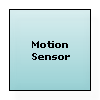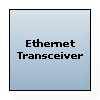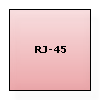Real Time Clocks for Occupancy Sensors
 Real Time Clocks
(RTCs) are IC devices that keep track of time. A typical RTC can provide the time of day as well
as the date via a serial bus such as I2C or SPI. Although similar in many ways, RTCs should not
be confused with clock generators, which are used to synchronize various parts of a circuit.
Real Time Clocks
(RTCs) are IC devices that keep track of time. A typical RTC can provide the time of day as well
as the date via a serial bus such as I2C or SPI. Although similar in many ways, RTCs should not
be confused with clock generators, which are used to synchronize various parts of a circuit.
Ambient Light Sensing for Occupancy Sensors
 Ambient light sensors
are used to detect the amount of light present at a given location. They allow for dynamic
adjustments to be made in response to changes in ambient lighting and are used in many
applications, including consumer electronics, automotive systems, and building automation.
Systems can be designed to automatically maintain some minimum level of lighting for added
safety, and also dim or turn off redundant or unneeded light sources to increase power savings.
Ambient light sensors
are used to detect the amount of light present at a given location. They allow for dynamic
adjustments to be made in response to changes in ambient lighting and are used in many
applications, including consumer electronics, automotive systems, and building automation.
Systems can be designed to automatically maintain some minimum level of lighting for added
safety, and also dim or turn off redundant or unneeded light sources to increase power savings.
Motion Sensing for Occupancy Sensors
 The most common type of
motion sensor
uses a passive infrared (PIR) sensor and is often known as a passive infrared detector (PID).
All objects produce EM radiation over a certain frequency range, and anything close to room
temperature radiates mostly in the infrared range. PIR-based motion detectors make use of
pyroelectric materials to detect local changes in temperature (measured as incident IR radiation
from objects in the room). Careful positioning of the sensor helps eliminate sources of
interference or sensor saturation, such as cold or hot air blowing from an HVAC vent.
The most common type of
motion sensor
uses a passive infrared (PIR) sensor and is often known as a passive infrared detector (PID).
All objects produce EM radiation over a certain frequency range, and anything close to room
temperature radiates mostly in the infrared range. PIR-based motion detectors make use of
pyroelectric materials to detect local changes in temperature (measured as incident IR radiation
from objects in the room). Careful positioning of the sensor helps eliminate sources of
interference or sensor saturation, such as cold or hot air blowing from an HVAC vent.
Memory for Occupancy Sensors
 EEPROM (Electrically Erasable Programmable Read-Only Memory) is a type of non-volatile
memory
commonly used in electronic devices for storing small amounts of data. Voltage levels for
"read-only" operation are typically much lower than the voltages required to program the chip.
Also, the term "non-volatile" here means that any stored data persists even when power is
removed. EEPROMs consist of a large array of MOS transistors, each with an additional, floating
gate to hold electric charge (i.e. data) for long periods of time without a power source.
EEPROM (Electrically Erasable Programmable Read-Only Memory) is a type of non-volatile
memory
commonly used in electronic devices for storing small amounts of data. Voltage levels for
"read-only" operation are typically much lower than the voltages required to program the chip.
Also, the term "non-volatile" here means that any stored data persists even when power is
removed. EEPROMs consist of a large array of MOS transistors, each with an additional, floating
gate to hold electric charge (i.e. data) for long periods of time without a power source.
Processors for Occupancy Sensors
 The term "
processor
" refers to an electronic device that performs computational functions and carries out the
instructions of a stored program. Other terms for processor are microprocessor, central
processing unit, and digital signal processor. Essentially, the processor refers to "the brains
of a computer."
The term "
processor
" refers to an electronic device that performs computational functions and carries out the
instructions of a stored program. Other terms for processor are microprocessor, central
processing unit, and digital signal processor. Essentially, the processor refers to "the brains
of a computer."
ZigBee Modules for Occupancy Sensors
 Zigbee
is a specification for communication in wireless personal area networks (WPANs) and is designed
for low-power, cost-efficient, and low duty cycle applications. Built upon the IEEE 802.15.4
standard, Zigbee adds both routing and multi-hop functionality. Star networks as well as
peer-to-peer (e.g., mesh and cluster tree) are supported, making Zigbee networks dynamic,
scalable, and decentralized. These qualities and more make Zigbee an excellent technology for
applications like home/industrial automation, medical monitoring, and HVAC control.
Zigbee
is a specification for communication in wireless personal area networks (WPANs) and is designed
for low-power, cost-efficient, and low duty cycle applications. Built upon the IEEE 802.15.4
standard, Zigbee adds both routing and multi-hop functionality. Star networks as well as
peer-to-peer (e.g., mesh and cluster tree) are supported, making Zigbee networks dynamic,
scalable, and decentralized. These qualities and more make Zigbee an excellent technology for
applications like home/industrial automation, medical monitoring, and HVAC control.
Ethernet Transceivers for Occupancy Sensors
 Ethernet
is the most commonly used technology for non-wireless local area networks (LANs). Ethernet
controllers perform the function of interfacing computers and other electronic devices in a
network. Ethernet itself only defines the physical (PHY) and datalink (MAC) layers of the OSI
Model; however, processors with integrated Ethernet controllers can provide additional functions
such as a TCP/IP protocol stack.
Ethernet
is the most commonly used technology for non-wireless local area networks (LANs). Ethernet
controllers perform the function of interfacing computers and other electronic devices in a
network. Ethernet itself only defines the physical (PHY) and datalink (MAC) layers of the OSI
Model; however, processors with integrated Ethernet controllers can provide additional functions
such as a TCP/IP protocol stack.
Audio Amplifiers for Occupancy Sensors
 Amplifiers
have enormous voltage gain, use feedback to operate, and can be classified in different ways.
They can be identified by the device they are intended to drive (e.g., headphone amplifier,
speaker amplifier), the input that they are to amplify (e.g. guitar amplifier), the frequency
range of the signal (e.g., RF, Audio), and by the function that they perform (e.g. inverting
amplifier, power amplifier.)
Amplifiers
have enormous voltage gain, use feedback to operate, and can be classified in different ways.
They can be identified by the device they are intended to drive (e.g., headphone amplifier,
speaker amplifier), the input that they are to amplify (e.g. guitar amplifier), the frequency
range of the signal (e.g., RF, Audio), and by the function that they perform (e.g. inverting
amplifier, power amplifier.)
Ethernet ESD for Occupancy Sensors
 Electrostatic Discharge
(
ESD
) is a naturally occurring phenomenon. If you have ever been zapped by a socks-wearing kid who
has just discovered static charge build up, you have experienced ESD first hand. ESD is like a
miniature, localized lightning bolt caused by an electrical discharge. ESD can have seriously
damaging effects on an integrated chip or system and cause poor performance or failure later on
by merely weakening the circuits.
Electrostatic Discharge
(
ESD
) is a naturally occurring phenomenon. If you have ever been zapped by a socks-wearing kid who
has just discovered static charge build up, you have experienced ESD first hand. ESD is like a
miniature, localized lightning bolt caused by an electrical discharge. ESD can have seriously
damaging effects on an integrated chip or system and cause poor performance or failure later on
by merely weakening the circuits.
Speakers for Occupancy Sensors
 A
speaker
is a transducer that produces sound in response to an electrical audio signal. The most common
type of speaker uses a lightweight cone connected to a rigid frame. The combination of a
permanent magnet and a speaker coil force the speaker cone to move back and forth in accordance
with the electrical signal from an audio amplifier, thereby reproducing the sound. Many
electronic devices incorporate a small, inexpensive speaker to alert users to conditions such as
low battery charge level and other circumstances which require user intervention.
A
speaker
is a transducer that produces sound in response to an electrical audio signal. The most common
type of speaker uses a lightweight cone connected to a rigid frame. The combination of a
permanent magnet and a speaker coil force the speaker cone to move back and forth in accordance
with the electrical signal from an audio amplifier, thereby reproducing the sound. Many
electronic devices incorporate a small, inexpensive speaker to alert users to conditions such as
low battery charge level and other circumstances which require user intervention.
RJ-45 Connectors for Occupancy Sensors
 RJ-45 connectors
are a type of electrical connector commonly used for Ethernet jacks. The term "RJ-45" is
something of a misnomer, but it almost always refers to an 8P8C (eight position, eight contact)
modular connector with wiring pin-outs compatible with standard Ethernet.
RJ-45 connectors
are a type of electrical connector commonly used for Ethernet jacks. The term "RJ-45" is
something of a misnomer, but it almost always refers to an 8P8C (eight position, eight contact)
modular connector with wiring pin-outs compatible with standard Ethernet.
 Australia
Australia